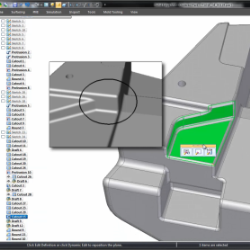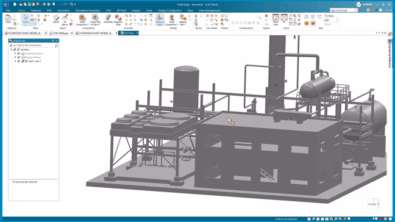Quick response to late-stage design changes

No one needs to tell you how busy you are—you know how busy you are…when you work through lunch (again), stay at your desk much later than you had planned (again), and push off that vacation (again) until things slow down a bit (if they ever do).
Most of us now spend more time at work than even just three years ago, according to recent surveys. And many of us take fewer vacations. On top of that, engineering jobs are getting more complex—meaning that there’s even more that you have to do in the time that you have. “Working late is the norm in small business, especially if I’m trying to finish up a set of forming prints for a vendor so that I can send a purchase order,” says Craig Hall of Hall Designs, “I try to do that at the end of the day knowing they’ll process new work orders first thing in the morning before the phones begin to ring.” And when you are trying to wrap up your last project and head out for the day, nothing is more frustrating than a last minute change request that threatens to put a big chunk of extra work between you and the door.
(image courtesy of https://blogs.hopkins-interactive.com/jackier/)
The term “unexpected design change” is a bit of a misnomer, isn’t it? More often than not, change is the only constant. And the time it takes to respond to that not-so-surprising change request inevitably involves additional time spent backtracking through your model, doing rework, and sometimes (shudder) restarting. Editing a single part in an assembly wreaks havoc on the relationships created between parts. Matching faces, angles and profiles are driven off of the component you’re editing. Links that you break in your hurry to finish create other issues down the line. “Even small changes may take hours, if you have to open and edit individual parts in a traditional CAD model,” says Ricardo Espinosa, R&D Engineering Services manager at Kimball International, Inc. (Hear more of what he has to say here.)
Those are hours you’d like back, aren’t they? If you’re running a small business, those extra hours can also mean less time for new projects or customers. And that probably makes it even harder to take a vacation.
But what if last minute change requests didn’t have to mean dealing with red exclamation marks, adding reference geometry, reordering features, or rebuilding parts from scratch? How much more time would you have, how much less stress would you have, if making a last minute change to your model was as simple as, well, just making a change?
Interested? Take a look at this new video, which demonstrates the power of Solid Edge with synchronous technology when it comes to making late stage changes.
Pretty impressive, right? And that’s only the beginning of what synchronous technology in Solid Edge can do for you. Take a look at some of the other cool ways it can make your life a lot easier, and less stressful. And then…start planning that vacation.




Comments